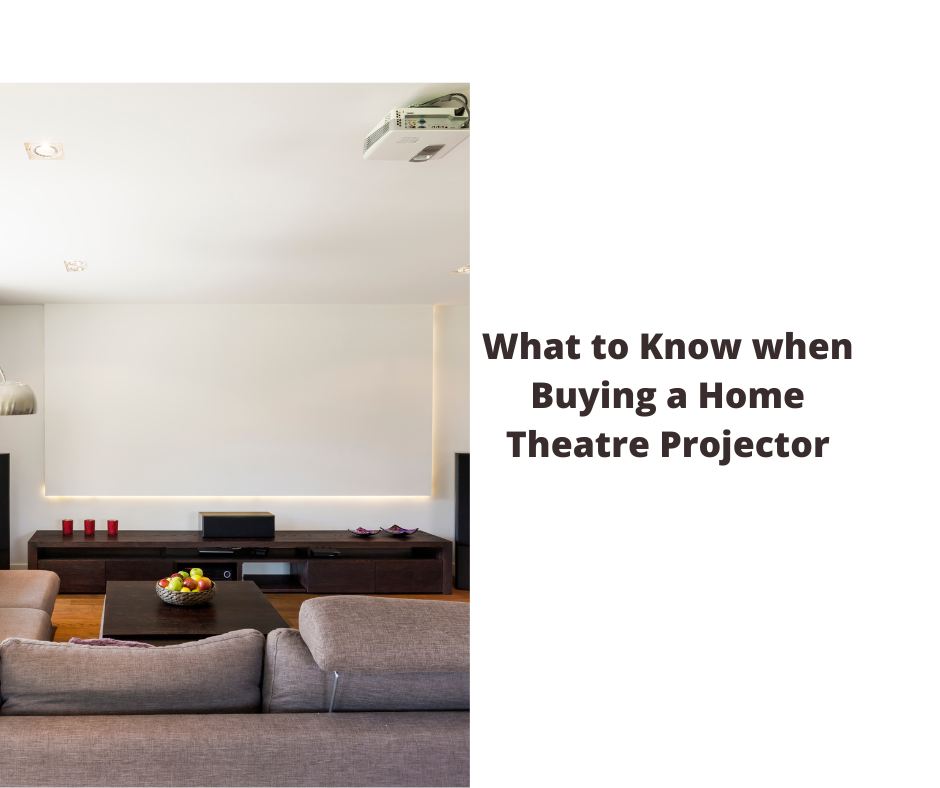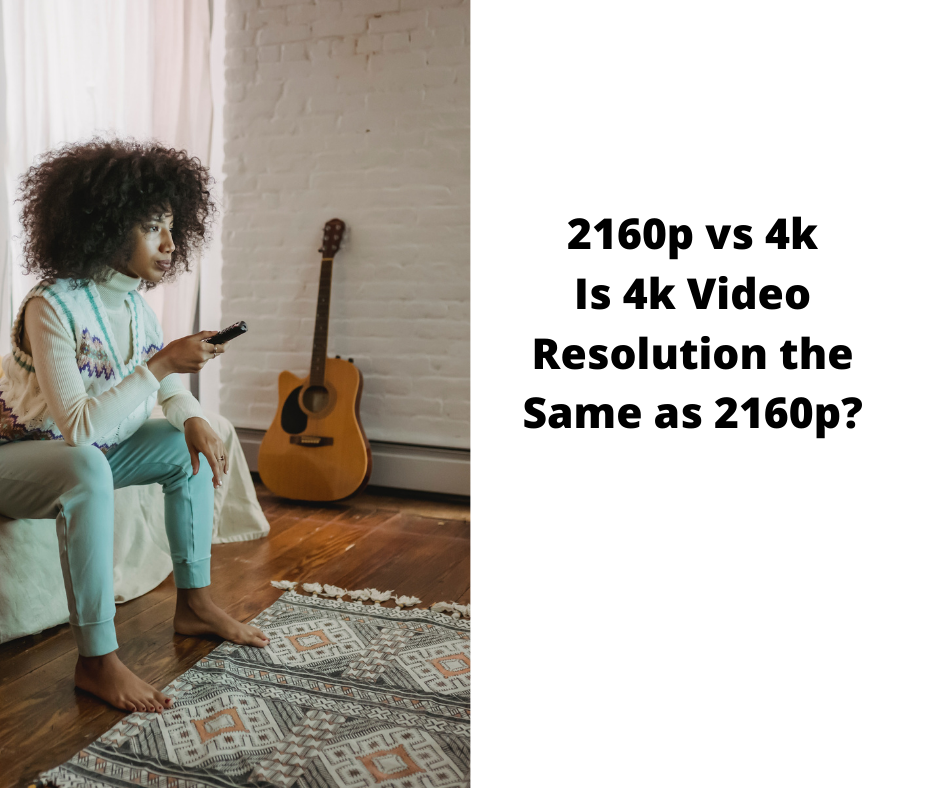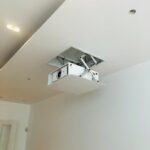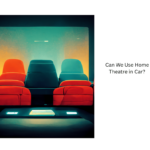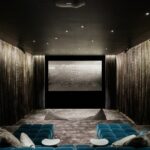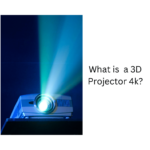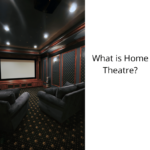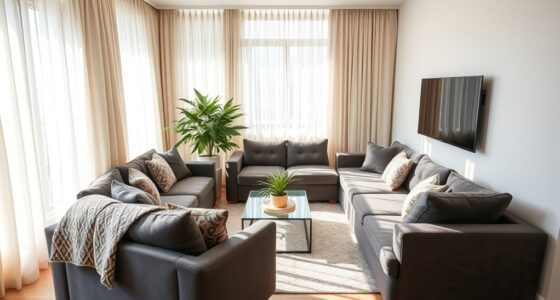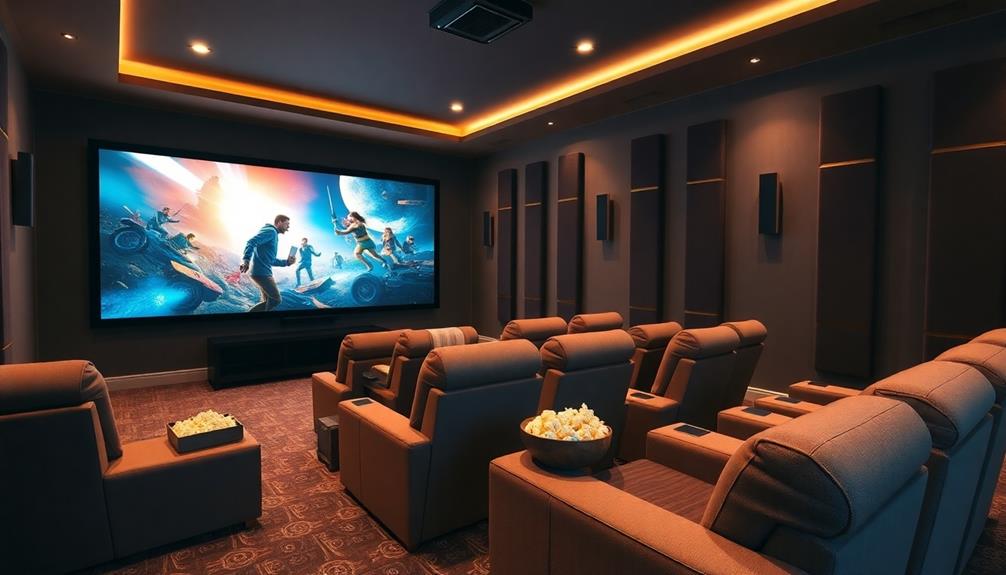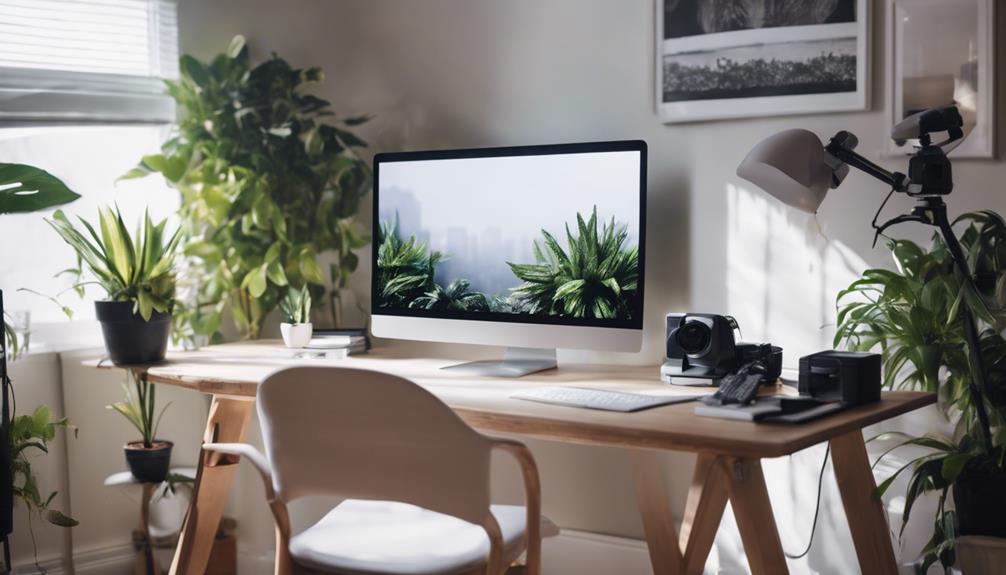Home theater projectors provide a fantastic opportunity to enhance your viewing experience from the comfort of your own home. With a wide variety of options on the market, it can be difficult to determine which features are most important when purchasing a home theater projector. This article will delve into the essential factors to keep in mind when selecting a home theater projector.
Home Theatre Projector Pros
- Large Screen Size: One of the main advantages of using a home theatre projector is the ability to create a large screen size. Projectors can create an image that is much larger than a standard TV, providing a more immersive and cinematic experience.
- Customizable Image Size: Projectors also offer a customizable image size, allowing you to adjust the image size to fit your room and viewing preferences.
- Portability: Home theatre projectors are generally more portable than traditional TVs, making them a great option for those who want to move the projector between different rooms or take it on the go.
- Cost-effective: Projectors can be more cost-effective than traditional TVs, especially when it comes to creating a large screen size.
- Variety of Connectivity Options: Home theatre projectors offer a variety of connectivity options, including HDMI, VGA, and USB, allowing you to easily connect your devices and enjoy high-quality video and audio.
Home Theatre Projector Cons
- Brightness: One of the main disadvantages of using a home theatre projector is that they can be less bright than traditional TVs, especially in brightly lit rooms. This can affect the overall image quality and reduce the overall viewing experience.
- Image Quality: Projectors can be more sensitive to environmental factors such as room lighting and screen quality, which can affect the image quality and overall viewing experience.
- Placement: Projectors require a specific placement to produce the best possible image quality, which can limit the options for room layout and furniture placement.
- Noise: Projectors can produce more noise than traditional TVs, especially if they feature a fan-based cooling system.
- Maintenance: Projectors require regular maintenance, including cleaning the filters and replacing the lamp, which can add to the overall cost of ownership.
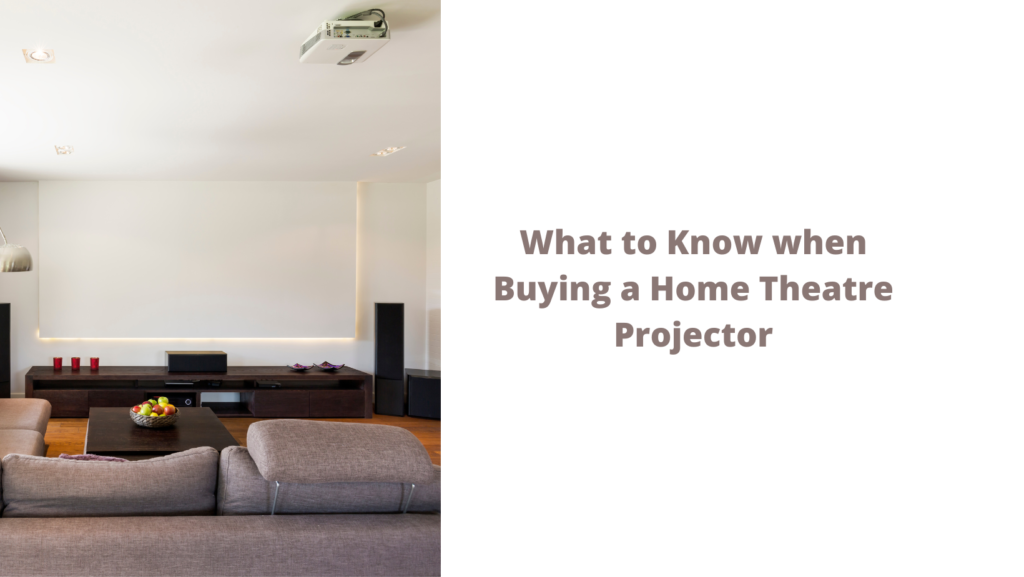
What to Know When Buying a Home Theatre Projector
If you’re in the market for a home theatre projector, there are a few important things to consider before purchasing. Here are some key factors to keep in mind:
- Resolution: One of the most important factors to consider when buying a home theatre projector is the resolution. You’ll want to ensure the projector has a high enough resolution to provide clear and detailed images. Look for a projector with a resolution of at least 1080p or higher.
- Brightness: The brightness of a projector is measured in lumens, and you’ll want to choose a projector with a brightness level that is appropriate for the size of the room and the amount of ambient light. A projector with a brightness of at least 2000 lumens is recommended for home theatre use.
- Contrast ratio: Contrast ratio refers to the difference between an image’s brightest and darkest parts. A higher contrast ratio will provide more depth and detail in the image. Look for a projector with a contrast ratio of at least 1000:1.
- Throw distance: The throw distance is the distance between the projector and the screen, and it’s important to choose a projector with a throw distance that is appropriate for the size of your room. Make sure to measure the distance between the projector and the screen before making a purchase.
- Connectivity: Consider the type of connectivity options that the projector offers, such as HDMI, VGA, and USB. Ensure that the projector has the connections you need to connect your devices.
- Noise level: Projectors can be noisy, and it’s important to choose a model that has a low noise level. Look for a projector with a noise level of 30 decibels or less.
- Brand and warranty: Finally, consider the brand and warranty of the projector before making a purchase. Choose a reputable brand with good customer reviews, and ensure that the projector has a warranty for added peace of mind.
Considering these factors, you can choose a home theatre projector that provides excellent picture quality and is suitable for your specific needs.
The Importance of Resolution When Buying a Home Theatre Projector
When buying a home theatre projector, the resolution is one of the most important factors to consider. Resolution refers to the number of pixels that make up an image and is a key factor in determining the clarity and detail of the images displayed by the projector. In this article, we’ll explore the importance of resolution when buying a home theatre projector and provide some tips for choosing a projector with the right resolution for your needs.
High resolution is essential for a great home theatre experience. A higher resolution provides greater detail, sharper edges, and more lifelike colors in the projected image. This is especially important for larger screens, as the image will be more visible and any imperfections will be more noticeable. High-resolution projectors are also ideal for displaying content such as Blu-ray discs, streaming services, and video games, often with high-quality graphics requiring a high-resolution display.
When it comes to home theatre projectors, there are several resolution options available. The most common resolution for home theatre projectors is 1080p, which is 1920 x 1080 pixels. This is a great option for most home theatre setups and provides excellent image quality. However, if you want even higher resolution, there are 4K projectors available that provide a resolution of 3840 x 2160 pixels, which is four times the resolution of 1080p.
When choosing a projector, it’s important to consider the screen size and viewing distance. A higher resolution is recommended for larger screens or longer viewing distances to ensure that the image remains clear and detailed. However, if you have a smaller screen or a shorter viewing distance, a lower resolution may be sufficient and can help save on the cost of the projector.
In summary, the resolution is a crucial factor to consider when buying a home theatre projector. A higher resolution provides greater detail and clarity in the image and is especially important for larger screens and high-quality content. When choosing a projector, consider the size of the screen and viewing distance to determine the appropriate resolution for your needs. By choosing a projector with the right resolution, you can ensure that you get the best possible home theatre experience.
The Importance of Brightness When Choosing a Home Theatre Projector
Brightness is one of the most important factors when choosing a home theatre projector. The brightness of a projector determines the quality of the image displayed on the screen and is a key factor in providing a great home theatre experience. In this article, we’ll explore the importance of brightness when choosing a home theatre projector and provide some tips for selecting a projector with the appropriate brightness for your needs.
Brightness is measured in lumens and refers to the amount of light the projector can produce. A brighter projector provides a clearer and more vivid image, which is especially important in environments with high levels of ambient light. In a home theatre environment, it’s important to choose a projector with a brightness level appropriate for the room’s size and the amount of ambient light present.
When selecting a projector, consider the size of the room and the distance between the projector and the screen. Larger rooms and longer distances between the projector and screen require higher brightness levels to ensure that the image remains clear and vivid. For example, a projector with a brightness level of 2000 lumens is recommended for rooms with high levels of ambient light, while a projector with a brightness level of 1000 lumens may be sufficient for darker rooms.
It’s also important to consider the type of content that you will be viewing with your home theatre projector. If you plan to watch movies or other content with a high level of detail, such as sports or video games, a higher level of brightness is recommended to ensure that the image remains clear and vivid. However, if you plan to use your projector primarily for low-light content such as movies or TV shows, a lower level of brightness may be sufficient.
In addition to brightness, it’s also important to consider the projector’s contrast ratio. Contrast ratio refers to the difference between an image’s brightest and darkest parts and is a key factor in providing a clear and vivid image. A higher contrast ratio provides more depth and detail in the image and can help improve the overall quality of the home theatre experience.
In conclusion, brightness is a crucial factor to consider when selecting a home theatre projector. A projector with the appropriate brightness level can help ensure that the image remains clear and vivid in various lighting environments. When selecting a projector, consider the size of the room, the distance between the projector and screen, and the type of content that you will be viewing to determine the appropriate level of brightness for your needs.
The Importance of Contrast Ratio When Choosing a Home Theatre Projector
Contrast ratio is an essential factor to consider when choosing a home theatre projector. The projector’s contrast ratio refers to the difference between the darkest and brightest parts of an image, and is a key factor in determining the overall image quality. In this article, we’ll explore the importance of contrast ratio when choosing a home theatre projector and provide some tips for selecting a projector with the appropriate contrast ratio for your needs.
A high contrast ratio is important for providing a clear and detailed image, especially in low-light environments. A higher contrast ratio provides more depth and detail in the image, making it more realistic and lifelike. In a home theatre environment, a high contrast ratio can help provide a more immersive viewing experience.
When selecting a projector, consider the type of content that you will be viewing. A high contrast ratio for movies and other video content can help provide more detail and improve the viewing experience. A high contrast ratio is also important for gaming, as it can help improve the clarity and detail of graphics and other visual elements.
When comparing projectors, it’s important to pay attention to the contrast ratio specifications. Projectors with a contrast ratio of at least 1000:1 are recommended for home theatre use, with higher ratios providing even better image quality. Some projectors also feature dynamic contrast ratios, which can provide even better contrast and more vivid colors.
It’s also important to consider other factors that can affect contrast, such as the type of screen being used. A high-quality screen can help improve the overall image quality and contrast, providing a more immersive viewing experience.
In addition to the contrast ratio, other factors to consider when choosing a home theatre projector include brightness, resolution, and throw distance. Choosing a projector that meets your specific needs in all of these areas can help ensure that you get the best possible home theatre experience.
In conclusion, the contrast ratio is a crucial factor to consider when choosing a home theatre projector. A high contrast ratio can help provide more detail and a more realistic image, improving the overall viewing experience. When selecting a projector, consider the type of content that you will be viewing and choose a projector with the appropriate contrast ratio for your needs. Choosing a projector with a high contrast ratio allows you to enjoy a more immersive and enjoyable home theatre experience.
How to Choose the Right Throw Distance for Your Home Theatre Projector
Throw distance is an important factor when choosing a home theatre projector. The throw distance is the distance between the projector and the screen, and it’s important to choose a projector with the appropriate throw distance for your room size and screen size. In this article, we’ll explore the importance of throw distance when choosing a home theatre projector and provide some tips for selecting a projector with the right throw distance for your needs.
When choosing a projector, it’s important to consider the size of the room and the distance between the projector and the screen. A projector with a short throw distance is ideal for smaller rooms or rooms with limited space. Short-throw projectors can be placed closer to the screen, which can help reduce the amount of shadow and glare the projector creates.
On the other hand, if you have a larger room or a larger screen size, a projector with a longer throw distance may be necessary. A longer throw distance allows the projector to be placed further away from the screen, which can help provide a larger image size and reduce distortion.
When choosing a projector, it’s also essential to consider the lens zoom capabilities. Some projectors feature a zoom lens, which allows you to adjust the image size without changing the distance between the projector and the screen. This can be especially helpful if you have a smaller room and need to adjust the image size to fit your screen.
In addition to throw distance and zoom capabilities, it’s also important to consider the projector’s aspect ratio. The aspect ratio is the ratio of the width to the height of the projected image. Choosing a projector with an aspect ratio matches your screen size and viewing preferences is important.
When selecting a home theatre projector, it’s important to consider all of these factors to ensure you get the best viewing experience. Choosing a projector with the appropriate throw distance, zoom capabilities, and aspect ratio allows you to create a home theatre setup that provides an immersive and enjoyable viewing experience.
In conclusion, throw distance is essential when choosing a home theatre projector. A projector with the appropriate throw distance can help ensure that the image is clear, vibrant, and properly sized for your room and screen. When selecting a projector, consider the size of your room, the distance between the projector and the screen, and the projector’s zoom capabilities and aspect ratio to ensure that you get the best possible home theatre experience.
A Guide to Choosing the Right Connectivity for Your Home Theatre Projector
When choosing a home theatre projector, connectivity is an important factor to consider. The right connectivity options allow you to easily connect your devices, such as Blu-ray players and gaming consoles, to the projector. In this article, we’ll explore the importance of connectivity when choosing a home theatre projector and provide some tips for selecting a projector with the right connectivity options for your needs.
Home theatre projectors’ most common connectivity options are HDMI, VGA, and USB. HDMI is the most popular option and provides high-quality digital video and audio. Most modern devices, such as Blu-ray players and gaming consoles, feature HDMI outputs, so choosing a projector with at least one HDMI input is important. Some projectors also feature multiple HDMI inputs, which can be useful if you plan to connect multiple devices to the projector.
VGA is an older connectivity option that is still commonly used for connecting computers and laptops to projectors. VGA provides analog video and audio and is useful if you plan to use your projector for presentations or other computer-related tasks.
USB connectivity is useful for playing media files directly from a USB drive. Some projectors feature a built-in media player that allows you to play movies, music, and photos directly from a USB drive.
When choosing a home theatre projector, it’s important to consider the specific devices that you plan to connect to the projector. Make sure that the projector has the appropriate connectivity options for your devices. Additionally, consider the length of the cables needed to connect your devices to the projector. Ensure the cables are long enough to reach from the projector to your devices without causing clutter or tripping hazards.
In addition to connectivity options, it’s also important to consider the audio options provided by the projector. Some projectors feature built-in speakers, while others require external speakers or a home theatre receiver for audio output. Make sure that the projector has the appropriate audio options for your needs.
In conclusion, connectivity is an important factor to consider when choosing a home theatre projector. The right connectivity options allow you to connect your devices and enjoy high-quality video and audio easily. When selecting a projector, consider the specific devices that you plan to connect, the length of the required cables, and the audio options provided by the projector. Choosing a projector with the appropriate connectivity options allows you to create a home theatre setup that provides an immersive and enjoyable viewing experience.
How to Choose a Home Theatre Projector with the Right Noise Level
Noise level is an important factor to consider when choosing a home theatre projector. The noise level of a projector refers to the amount of noise that it produces while in operation. In this article, we’ll explore the importance of noise level when choosing a home theatre projector and provide some tips for selecting a projector with the appropriate noise level for your needs.
The noise level of a projector is measured in decibels (dB). A lower noise level is generally preferred, as it provides a quieter and more enjoyable viewing experience. It’s recommended to choose a projector with a noise level of 30 dB or less.
When selecting a projector, consider the projector’s placement in the room. A projector that is placed close to the viewer or in an enclosed space can be especially distracting if it produces a lot of noise. A projector with a low noise level is recommended for these types of environments.
It’s also important to consider the specific noise level of the projector when it is in use. Some projectors produce a noticeable fan noise while in operation, while others are much quieter. Look for reviews and specifications that provide information on the projector’s noise level to ensure that it is appropriate for your needs.
In addition to noise level, it’s important to consider other factors that can affect the noise level of your home theatre setup. For example, external speakers and other components can also produce noise that can detract from the overall viewing experience. Make sure to choose components that are also quiet and produce minimal noise.
It’s also important to consider the cooling system of the projector. Some projectors use a fan-based cooling system, which can produce noise. Other projectors use a silent cooling system that does not produce any noise. When selecting a projector, consider the type of cooling system used and choose a projector with a silent cooling system if noise is a concern.
In conclusion, noise level is an important factor to consider when choosing a home theatre projector. A low noise level can help ensure a more enjoyable and immersive viewing experience. When selecting a projector, consider the projector’s placement, the specific noise level of the projector, and the cooling system used. Choosing a projector with the appropriate noise level allows you to create a home theatre setup that provides a quiet and enjoyable viewing experience.
Why Brand and Warranty are Important Factors When Choosing a Home Theatre Projector
Brand and warranty are important factors when choosing a home theatre projector. The brand of the projector can provide an indication of the quality and reliability of the product, while the warranty provides protection against defects and other issues that may arise. In this article, we’ll explore the importance of brand and warranty when choosing a home theatre projector and provide some tips for selecting a projector with a reputable brand and a strong warranty.
When choosing a home theatre projector, it’s important to choose a reputable brand with a track record of producing high-quality products. A reputable brand is more likely to produce a reliable projector that performs well and is also more likely to provide good customer support in case of any issues or questions. Some well-known brands in the home theatre projector industry include Sony, Epson, and Optoma.
In addition to the brand, it’s also important to consider the warranty provided by the projector manufacturer. A strong warranty can provide peace of mind and protection against defects and other issues that may arise. Look for a projector that comes with a warranty of at least one year, and consider purchasing an extended warranty for additional protection.
When reviewing the warranty, pay attention to the specific coverage provided. Some warranties may cover only certain parts or components, while others may provide more comprehensive coverage. It’s also important to consider the terms of the warranty, such as any limitations or exclusions that may apply.
It’s also a good idea to read reviews and customer feedback to get an idea of the reliability and customer support provided by the manufacturer. Look for feedback on the brand and warranty, as well as on the overall performance and quality of the projector.
In addition to brand and warranty, it’s also important to consider other factors when choosing a home theatre projector, such as resolution, brightness, and connectivity. By considering all of these factors, you can choose a projector that meets your specific needs and provides an immersive and enjoyable viewing experience.
In conclusion, brand and warranty are important factors when choosing a home theatre projector. A reputable brand and a strong warranty can provide peace of mind and protection against defects and other issues that may arise. When selecting a projector, consider the brand, warranty, and other factors such as resolution, brightness, and connectivity. Choosing a projector with a reputable brand and a strong warranty allows you to create a home theatre setup that provides a reliable and enjoyable viewing experience.
Size of Projected Image
The size of the projected image is a key factor to consider when using a home theatre projector. Projectors can create an image that is muchh larger than a standard TV, providing a more immersive and cinematic viewing experience.
The size of the projected image can be adjusted by changing the distance between the projector and the screen or wall. Most projectors come with a zoom feature that can also adjust the size of the projected image. It’s important to choose a projector with a throw ratio that is appropriate for the size of the room and the desired screen size.
Size of Projected Image Calculator
Projected Image Size Calculator
The size of the projected image can range from as small as 50 inches to as large as 300 inches or more, depending on the capabilities of the projector and the distance between the projector and the screen. The recommended screen size varies based on the resolution of the projector and the viewing distance. As a general rule of thumb, the screen size should be about twice the distance between the projector and the screen.
When choosing the size of the projected image, it’s important to consider the size of the room and the seating arrangement. A larger image size is ideal for a larger room, while a smaller image size may be more appropriate for a smaller room. It’s also important to consider the aspect ratio of the projector and the screen, as this can affect the quality of the image and the overall viewing experience.
In conclusion, the size of the projected image is an important factor to consider when using a home theatre projector. The size of the projected image can be adjusted by changing the distance between the projector and the screen, and most projectors come with a zoom feature that can also adjust the size of the image. When choosing the size of the projected image, consider the size of the room and the seating arrangement, as well as the aspect ratio of the projector and the screen. By choosing the appropriate size for the projected image, you can create an immersive and enjoyable viewing experience in your home.
Things to Consider Before Buying Your Home Theatre Projector
A home theatre projector is a great way to create an immersive and enjoyable viewing experience at home. However, with so many options available, it can be challenging to know what to look for when buying a home theatre projector. In this article, we’ll explore some of the key factors to consider before buying a home theatre projector.

- Room Size: The size of the room is an important consideration when choosing a home theatre projector. Larger rooms require a projector with a higher brightness and a longer throw distance to create a larger image size.
- Screen Size: The size of the screen is another important factor to consider. Projectors can create an image that is much larger than a standard TV, so it’s important to choose a screen size that is appropriate for the room and the viewing distance.
- Resolution: Resolution refers to the number of pixels in the projected image and is a major factor in determining image quality. Look for projectors with high resolution, such as 1080p or 4K, for the best possible viewing experience.
- Brightness: Brightness is an important consideration, especially in rooms with a lot of ambient light. Look for projectors with high lumens ratings for the best possible image quality in all lighting conditions.
- Contrast Ratio: Contrast ratio refers to the difference between the brightest and darkest parts of the image. A high contrast ratio is important for creating a clear and detailed image, especially in darker scenes.
- Throw Distance: Throw distance refers to the distance between the projector and the screen. It’s important to choose a projector with a throw distance that is appropriate for the size of the room and the desired screen size.
- Connectivity: Look for a projector with a variety of connectivity options, including HDMI, VGA, and USB, to easily connect your devices and enjoy high-quality video and audio.
- Brand and Warranty: Consider the brand and warranty of the projector before making a purchase. A reputable brand is more likely to produce a reliable and high-quality product, and a strong warranty can provide protection against defects and other issues.
- Cost: Cost is an important factor to consider, as home theatre projectors can range in price from a few hundred dollars to several thousand. Set a budget and choose a projector that offers the features and quality you need within your budget.
In conclusion, there are many factors to consider when buying a home theatre projector, including room size, screen size, resolution, brightness, contrast ratio, throw distance, connectivity, brand and warranty, and cost. By considering these factors and choosing a projector that meets your specific needs, you can create an immersive and enjoyable viewing experience in your home.
Projector Lamp Cost
Projector lamps are an essential component of a home theatre projector, providing the light needed to create a clear and bright image. However, the cost of projector lamps can be a concern for many users. Here’s what you need to know about projector lamp cost.
The cost of projector lamps varies based on several factors, including the brand of the projector, the model of the lamp, and the quality of the lamp. In general, higher-end projectors will have more expensive lamps than lower-end models.
Most projector lamps have a lifespan of around 2,000 to 4,000 hours, depending on usage and environmental factors such as temperature and humidity. When the lamp reaches the end of its life, it will need to be replaced to maintain the quality of the image.
The cost of a replacement lamp can range from around $50 to $500 or more, depending on the factors mentioned above. In addition to the cost of the lamp, there may be additional costs for installation, such as hiring a professional technician to replace the lamp.
To reduce the cost of projector lamps, consider purchasing a high-quality projector that uses a long-lasting lamp. Some projectors also offer an eco-mode that can extend the life of the lamp and reduce the need for frequent replacements.
It’s also important to purchase projector lamps from a reputable source to ensure that you are getting a high-quality product. Generic or off-brand lamps may be cheaper, but they may not provide the same level of performance and reliability as a genuine replacement lamp.
In conclusion, the cost of projector lamps can be a concern for home theatre projector users. The cost of a replacement lamp can range from $50 to $500 or more, depending on several factors. To reduce the cost of projector lamps, consider purchasing a high-quality projector with a long-lasting lamp and purchase replacement lamps from a reputable source. By taking these steps, you can ensure that your home theatre projector provides a high-quality viewing experience at a reasonable cost.
Home Theatre Projector Costs
The cost of a home theatre projector can vary widely depending on a range of factors, including the quality of the projector, its features and capabilities, and the brand name. Here are some factors to consider when estimating the cost of a home theatre projector:
- Resolution: Higher resolution projectors will typically cost more. A 1080p projector will be less expensive than a 4K projector, for example.
- Brightness: Higher lumens ratings, which indicate greater brightness, also tend to increase the cost of the projector.
- Contrast Ratio: Higher contrast ratios, which offer more detail in darker and lighter scenes, can also increase the cost of a projector.
- Features: Projectors with additional features such as built-in speakers, wireless connectivity, and 3D capability will also typically cost more.
- Brand: Projectors from well-known brands may be more expensive than those from lesser-known brands. The quality of the projector can also vary based on the brand name.
- Lamp Life: Projectors that use longer-lasting lamps can also cost more upfront.
- Screen Size: The size of the screen the projector will be used with may also affect the cost of the projector, as larger screens require more powerful projectors.
In general, home theatre projectors can range in price from a few hundred dollars to several thousand dollars. It’s important to balance the desired quality and features with the budget for the project. A high-end home theatre projector can cost over $5,000, while an entry-level projector may be available for under $500.
It’s also important to consider additional costs, such as the cost of the projector screen, installation, and maintenance. These costs can vary depending on the size and complexity of the installation.
In conclusion, the cost of a home theatre projector can vary widely depending on the specific features and capabilities of the projector, as well as the brand name. By considering the desired quality and features and balancing them with the budget, it’s possible to find a projector that provides a high-quality viewing experience at a reasonable cost.
Blank Wall or A White Screen
When setting up a home theatre projector, one important decision to make is whether to project onto a blank wall or a white screen. Here are some factors to consider when making this decision:
- Image Quality: A white screen can provide a better image quality than a blank wall, as it is specifically designed for projector use. A white screen can reflect the light from the projector more evenly, resulting in a clearer and more vibrant image.
- Ambient Light: A blank wall may be more reflective than a white screen, which can cause issues with ambient light. A white screen can reduce the impact of ambient light on the image, leading to better image quality in all lighting conditions.
- Size: A blank wall may limit the size of the projected image, as it is typically smaller than a dedicated screen. A white screen allows for greater flexibility in image size, as well as more accurate aspect ratios.
- Portability: A blank wall is always available, whereas a white screen can be difficult to move or transport. However, there are portable screens available for those who need to move the screen from one location to another.
- Cost: A blank wall is free, whereas a white screen can be a significant expense. However, the cost of a white screen can be worth it for those seeking the best possible image quality.
- Room Design: A white screen can be a better option for those who want to create a dedicated home theatre room with a custom design. A blank wall may be less desirable if it doesn’t fit with the overall room design.
In conclusion, while projecting onto a blank wall is an option, a white screen can provide better image quality, reduce the impact of ambient light, and allow for greater flexibility in image size. However, a white screen can be more expensive and less portable than a blank wall. Ultimately, the decision between a blank wall and a white screen will depend on factors such as image quality, ambient light, size, portability, cost, and room design.
Benefits of Having a Home Cinema Projector
Home theatre projectors have become increasingly popular as a way to create an immersive and enjoyable viewing experience at home. There are many benefits to using a home theatre projector, including:
- Large Screen Size: One of the main benefits of using a home theatre projector is the ability to create a large screen size. Projectors can create an image that is much larger than a standard TV, providing a more immersive and cinematic experience.
- Customizable Image Size: Projectors also offer a customizable image size, allowing you to adjust the image size to fit your room and viewing preferences.
- Portability: Home theatre projectors are generally more portable than traditional TVs, making them a great option for those who want to move the projector between different rooms or take it on the go.
- Cost-effective: Projectors can be more cost-effective than traditional TVs, especially when it comes to creating a large screen size.
- Variety of Connectivity Options: Home theatre projectors offer a variety of connectivity options, including HDMI, VGA, and USB, allowing you to easily connect your devices and enjoy high-quality video and audio.
- Immersive Viewing Experience: The large screen size and customizable image size of a home theatre projector create an immersive viewing experience that is ideal for movies, sports, and other types of entertainment.
- Easy to Set Up: Home theatre projectors are generally easy to set up and use, with most models offering plug-and-play connectivity and intuitive user interfaces.
- Versatility: Home theatre projectors are versatile, with many models offering a variety of features, such as built-in speakers, 3D capability, and wireless connectivity.
- Room Design: With a home theatre projector, you can design your room to fit your preferences. There is no need to fit furniture around the TV as you can place the projector where it fits best, creating a unique and personalized viewing experience.
In conclusion, home theatre projectors offer many benefits, including a large screen size, customizable image size, portability, cost-effectiveness, versatility, and immersive viewing experience. When choosing a home theatre projector, consider the specific features and benefits that best meet your needs and preferences. With a home theatre projector, you can create a viewing experience that is personalized and enjoyable for you and your family.

Home Cinema Projector Downsides
While a home cinema projector can provide an immersive and enjoyable viewing experience, there are some downsides to consider when deciding whether to use a projector in your home theatre setup. Here are some of the most common downsides to using a home cinema projector:
- Ambient Light: Projectors typically require a dark environment to produce a high-quality image. Even low levels of ambient light can significantly impact the quality of the image. This means that a dedicated home theatre room with light control is necessary for the best viewing experience.
- Limited Lamp Life: Projectors use a lamp that has a limited lifespan, usually around 2,000 to 4,000 hours. This means that the lamp will need to be replaced periodically, which can add to the cost of owning a projector.
- Maintenance: In addition to replacing the lamp, projectors also require regular maintenance to keep the filter clean and prevent overheating. This can be time-consuming and may require professional assistance.
- Image Quality: While projectors can produce a large image, the quality of the image can vary depending on the quality of the projector and the screen used. Lower-end projectors may have lower image quality than higher-end models.
- Setup: Projectors require a bit more setup than a traditional TV, including mounting the projector, running cables, and adjusting the image. This can be challenging for those who are not familiar with home theatre setup.
- Noise: Projectors can produce a significant amount of noise, which can be distracting during quiet scenes. This noise can come from the fan or the motor used to move the lens.
- Limited Viewing Angles: Some projectors have limited viewing angles, meaning that the image may be distorted or difficult to see from certain angles. This can be a concern for those with large families or groups of friends who want to enjoy the viewing experience together.
In conclusion, while a home cinema projector can provide an immersive and enjoyable viewing experience, there are some downsides to consider. These include ambient light, limited lamp life, maintenance, image quality, setup, noise, and limited viewing angles. By understanding these downsides and addressing them where possible, you can enjoy a high-quality viewing experience with your home theatre projector.
Cinema Projector Fan Noise
Fan noise is a common issue with home cinema projectors. The fan in a projector is used to keep the internal components cool and prevent overheating. However, this fan can also produce a significant amount of noise, which can be distracting during quiet scenes and diminish the overall viewing experience. Here are some ways to address cinema projector fan noise:
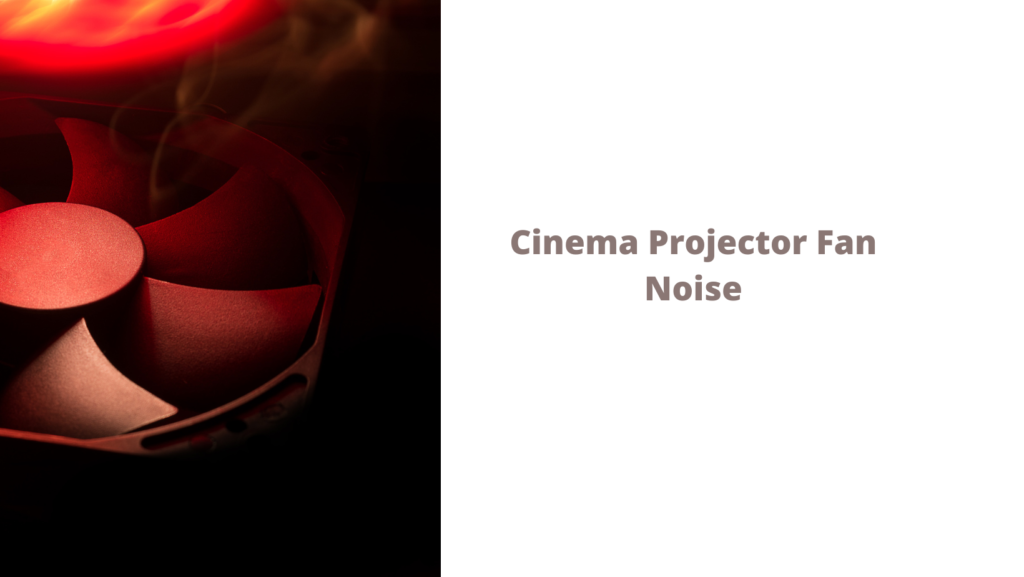
- Positioning: The positioning of the projector can impact the amount of fan noise it produces. Placing the projector on a stable and level surface can reduce the amount of noise, as can positioning it in a way that maximizes airflow and reduces the amount of heat generated.
- Noise Reduction Materials: Adding noise reduction materials, such as acoustic panels, to the room can help absorb and reduce the sound produced by the fan. These materials can be placed on the walls or ceiling, and can help improve the overall sound quality of the room.
- Quiet Mode: Many projectors offer a “quiet mode” option that reduces the amount of noise produced by the fan. This mode may lower the brightness of the image slightly, but can significantly reduce the amount of fan noise.
- External Fan: Some projectors have the option to add an external fan to help cool the unit. This can reduce the strain on the internal fan and reduce the amount of noise produced.
- Upgrade the Projector: In some cases, upgrading to a higher-end projector can significantly reduce the amount of fan noise. Higher-end models are often designed with quieter fans and more advanced cooling systems.
In conclusion, fan noise is a common issue with home cinema projectors, but there are several ways to address it. By positioning the projector correctly, adding noise reduction materials, using the quiet mode option, adding an external fan, or upgrading the projector to a higher-end model, you can reduce the amount of fan noise and improve the overall viewing experience.
Home Theatre Projectors vs. TVs
When it comes to creating a home theatre experience, the choice between a projector and a TV can be a difficult one. Here are some factors to consider when deciding between a home theatre projector and a TV:
- Screen Size: Projectors can produce much larger images than TVs, making them a great choice for those who want a truly immersive experience. A projector can produce an image that is 100 inches or more, while the largest TVs are typically around 85 inches.
- Image Quality: Both projectors and TVs can produce high-quality images, but there are some differences to consider. Projectors can produce a more cinematic experience, with better color accuracy and contrast. However, TVs typically offer better brightness and detail, especially in brightly-lit rooms.
- Viewing Environment: Projectors require a dark room to produce the best image quality, while TVs can produce a good image in a wider range of lighting conditions. If you plan to watch movies during the day, a TV may be a better choice.
- Setup: Projectors require more setup than TVs, including mounting the projector, running cables, and adjusting the image. This can be challenging for those who are not familiar with home theatre setup.
- Cost: In general, projectors are less expensive than larger TVs. However, the cost of a projector screen can add to the overall cost of the setup.
- Portability: Projectors can be more portable than TVs, allowing you to move the setup from room to room or take it with you on the go.
- Maintenance: Projectors require more maintenance than TVs, including lamp replacement and filter cleaning.
In conclusion, the choice between a home theatre projector and a TV will depend on a range of factors, including screen size, image quality, viewing environment, setup, cost, portability, and maintenance. Projectors can produce a more immersive and cinematic experience with a larger image size, while TVs are typically easier to set up and can produce better image quality in bright rooms. By considering these factors and choosing the option that best fits your needs and preferences, you can create a high-quality home theatre experience.
